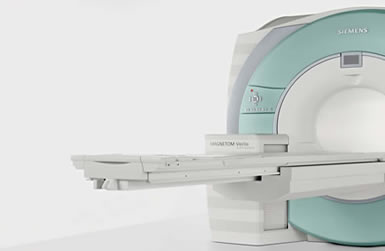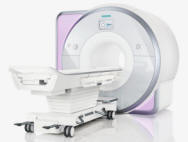 Many patients with chronic pain will respond to a combination of
physical therapy, oral medication and other conservative
therapies. However, when non-interventional therapies lack
effectiveness, oral analgesics cause intolerable side effects
and further corrective surgeries fail to give adequate pain
relief, intrathecal drug delivery (IDD) is an effective
alternative.
Many patients with chronic pain will respond to a combination of
physical therapy, oral medication and other conservative
therapies. However, when non-interventional therapies lack
effectiveness, oral analgesics cause intolerable side effects
and further corrective surgeries fail to give adequate pain
relief, intrathecal drug delivery (IDD) is an effective
alternative.
 General selection criteria for
intrathecal drug delivery
General selection criteria for
intrathecal drug delivery
As with neurostimulation, for IDD to be considered as a
treatment option, patients should meet the following general
selection criteria:
● There is an objective basis for the patientís pain complaint
● The patient is psychologically competent and has no
psychological contraindications
● Further corrective surgeries are likely to produce
complications or poor outcomes
● More-conservative therapies have failed to relieve pain or
have caused intolerable adverse events
● No contraindications to surgery exist (e.g. sepsis,
coagulopathy)
● No untreated chemical dependency exists
● Neurostimulation and IDD are not contraindicated
IDD has proven efficacy in patients with intractable nociceptive
pain where other therapies have failed, for example when oral
analgesics have not been effective or cause intolerable
side-effects. IDD has been used to successfully treat FBSS
patients where pain is predominantly in the lower back, in
multiple sites, or of a dominant nociceptive nature. IDD has
also been used in cases where neurostimulation or a
neurostimulation trial was unsuccessful and in difficult cancer
pain and visceral pain cases.
 Patient selection for intrathecal drug
delivery
Patient selection for intrathecal drug
delivery
As with neurostimulation, before a patient becomes a candidate
for IDD, the patient should undergo a thorough evaluation, which
should include both physical and psychological elements. In
addition, all patients should undergo a trial procedure.
 Physical evaluation
Physical evaluation
A comprehensive history and physical examination of the patient
should be completed to ensure that there is an objective basis
for the pain. A complete pain history includes a general medical
history with emphasis on the chronology and symptomatology of
the pain. These data should include information about the onset,
quality, intensity, distribution, duration, course and affective
components of the pain, and details about exacerbating and
relieving factors.
The physical examination should also include an appropriate
neurological and musculoskeletal evaluation. The effects of
pain, as well as the causes of pain, should be evaluated and
recorded. In addition, the physician should determine the pain
type, pain pattern, and sources of pain. Determination of such
pain characteristics allows the physician to select the
appropriate therapy.
 Psychological evaluation
Psychological evaluation
Most physicians agree that before considering a neuromodulation
procedure, the patient should be assessed by a psychiatrist or a
psychologist to rule out any psychological issues that may
effect the therapeutic outcome.
This psychological evaluation should take place in the early
phase of the patient selection procedure. A carefully performed
psychological evaluation will have several benefits including,
identifying those patients most likely to benefit from
neuromodulation procedures and better preparing the patient for
the neuromodulation procedure. It can also aid in preventing
unsuitable candidates from undergoing an invasive and costly
procedure and in redirecting rejected candidates to more
appropriate treatment programs.
 Intrathecal drug delivery trial procedure
Intrathecal drug delivery trial procedure
The IDD trial period consists of an initial titration period,
followed by an evaluation period in the patientís home
environment. Dose titration must be carried out in the hospital.
For this, small intrathecal doses of medication are administered
in a patient-controlled manner by the use of a
patient-controlled analgesia pump. The patient can increase the
dose until an acceptable level of pain relief is achieved. The
aim of the titration period is to find an optimal balance
between pain relief and prevention of the occurrence of side
effects. Once an optimal dose is established, the patient is
further tested on an outpatient basis. This permits the
assessment of the efficacy of IDD in the patientís home, and
provides important information on improvements in quality of
life and daily functioning. Ideally, the trial period should
last between 3 to 4 weeks.
 Indications for Intrathecal drug
delivery
Indications for Intrathecal drug
delivery
IDD is perceived to be most effective for nociceptive pain. In
general, IDD is indicated for:
● Chronic, intractable pain of malignant or non-malignant origin
● Nociceptive or mixed pain
● Stable or changing pain patterns
In addition, IDD may be indicated for patients with
non-malignant, intractable pain that is unresponsive to other
treatments, patients who have undergone an unsuccessful
neurostimulation trial, or for patients who experience
intolerable adverse events from systemic opioid treatment.
|
Table 1: Common indications for
intrathecal drug delivery |
|
Disorder |
Causes
and characteristics |
| Chronic back or leg pain
associated with Failed Back Surgery Syndrome (FBSS),
when pain is of a dominant nociceptive nature* |
● A broad term used to describe
persistent, disabling pain in the leg and/or lower back
that follows one or more corrective surgeries
● FBSS primarily of a nociceptive origin is the most
frequently used indication for IDD |
| Complex regional pain syndromes
(CRPS) |
● CRPS refers to various
painful conditions that can occur secondary to an injury
● CRPS with diffuse nociceptive pain and CRPS-associated
dystonia are the most frequently used indications for
IDD
● CRPS in cases where neurostimulation was unsuccessful
may also be indicated for IDD |
| CRPS II |
● An intensely unpleasant
burning pain felt in a limb where there has been partial
damage to the sympathetic and somatic sensory nerves |
| Cancer |
● Any malignant tumor which
arises from the abnormal or uncontrolled division of
cells that then invade and destroys the surrounding
tissues |
| Pancreatitis |
● An inflammatory disease of
the pancreas that involves permanent, progressive
destruction of pancreatic tissue
● It causes chronic abdominal pain which is usually
stabbing and burning in nature |
| Osteoarthritis |
● A disease of joint cartilage,
associated with secondary changes in the underlying
bone, which may cause pain and impair the function of
the affected joint
● It may result from trauma and is most common in those
past middle age
● Commonly occurs in the hip, knee and thumb joints
● A rheumatic disease involving several to many joints,
either together or in a sequence
● Causes pain, stiffness, swelling, tenderness and loss
of function
● The loss of bony tissue, resulting in bones that are
brittle and liable to fracture
● The chronic pain of osteoporosis is usually caused by
fractures
● Common bone fractures include hip fractures, wrist
fractures, and fractures of vertebrae (compression
fractures)
● Characterized by pain in the lowermost segment of the
spine with radiation of the lower sacral and perineal
areas
● The condition usually occurs after a fall in which the
patients falls on the coccyx
● A narrowing of the spaces in the spine resulting in
pressure on the spinal cord and/or nerve roots
● Pressure on the lower part of the spinal cord or on
nerve roots branching out from that area may give rise
to pain or numbness in the legs
● Pressure on the upper part of the spinal cord (neck)
produces similar symptoms in the shoulder |
| *FBSS pain that is
primarily nociceptive responds to IDD. However, as most
FBSS pain comprises nociceptive and neuropathic
component, it can be effectively treated with either
neurostimulation or IDD. **Neurostimulation using
retrograde SCS is also used in this indication |
|


 Whatís Up
Whatís Up

